|
|
Thursday Notes: Going back to the Apple Airport Extreme; Meta HypocrisyBy Graham K. Rogers
A couple of high-profile commentators have wondered if Apple should produce a suitable WiFi router as it did in the past. There was nothing wrong with the AirPort Extreme that I had. It ran from day one until it was superseded by the WiFi 6 router I bought; and when I put the Apple device back into service, it worked perfectly right away. Apple made a decision to cease producing this and many were (are) disappointed. As a result of the articles by Dan Moren (MacWorld) and then Mark Gurman (Bloomberg), I re-evaluated the Netgear router I had then went looking for a replacement. I had a look online at a TP-Link Archer AX6000 that was on offer at $249. While the price would have been a little high for what I want, the specifications were far beyond my requirements. Apple's old Airport router had just the right amount of ports too. The Airport app made connecting and adjustments easy enough. I did check Keychain access on the Mac and found that the old (complex) password for the Airport was still there, so I expected that going back should be relatively straightforward.
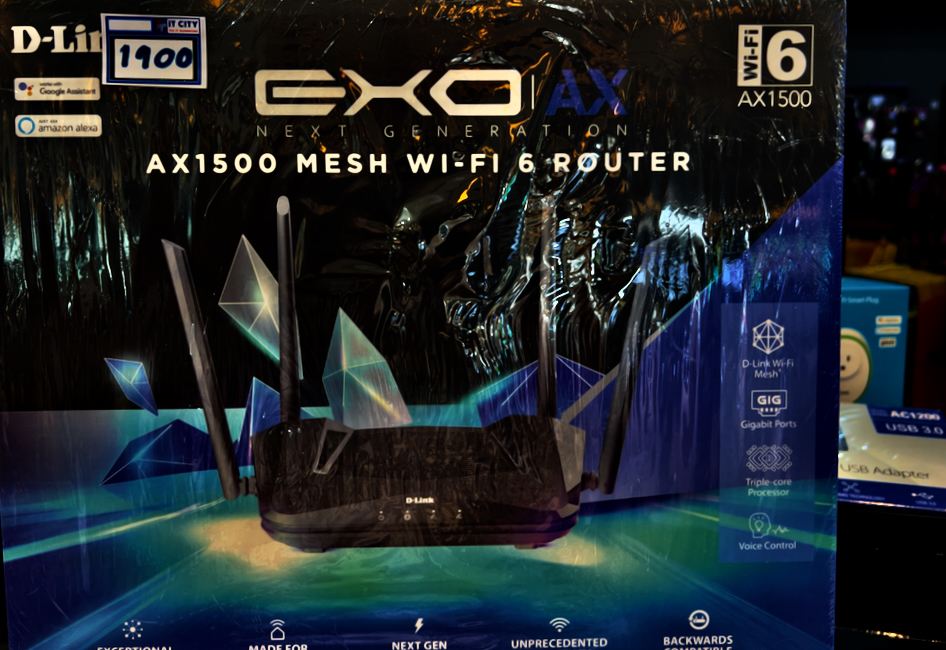
D-Link router on the shelves
Like many modern wifi routers the Netgear and D-Link routers have four ugly antennae sticking out: something the Airport did not have. These were neatly installed inside the construction, although that would have caused some attenuation. Although I use the WiFi in a smaller condo, the Airport device had been able to cover all the rooms in a larger detached house and the signal was available some 50 meters from the house. Perhaps the antennae in these ugly modern routers can be folded away for condo use. I later saw an online article for another D-Link router that closely resembles the Apple Airport router: the AX1800 WiFi6 router. This showed that the price was reduced on Amazon, but by the time I looked it was back to the $119 listing: about twice the price of the routers I saw in Bangkok. An extensive review of the device by John R. Delaney (PCMag) was fairly positive although mentioned that there was no malware protection. The testing reported in the article gave a good idea of how the signal could be accessed in the rooms of a house. Although the aesthetics of this router appeal to me - it looks just like the Airport apart from a few curly bits - I decided to hold off on this one.
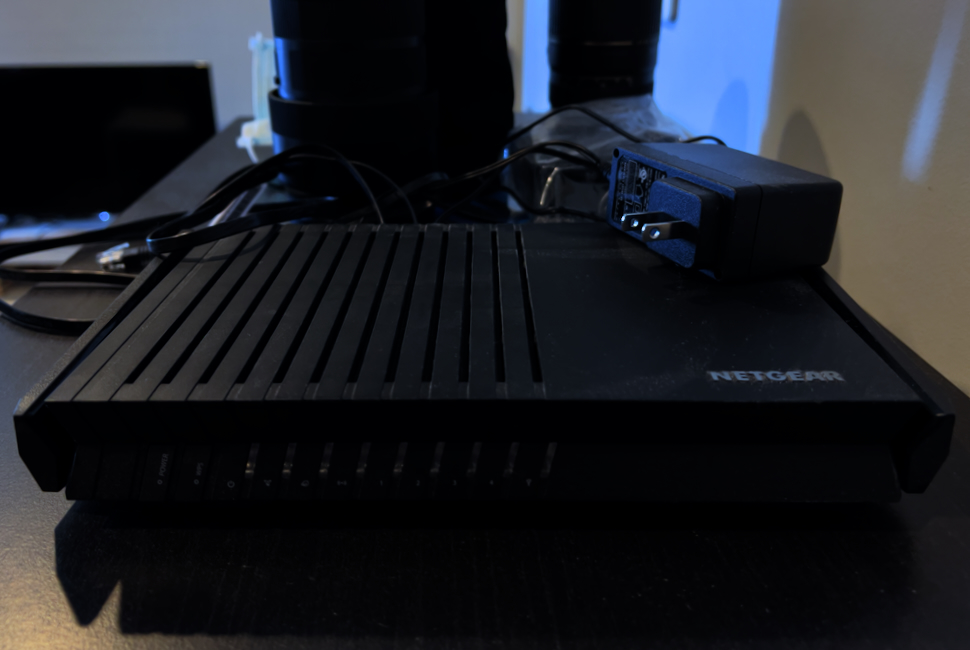
Decommissioned Netgear router on my shelf
When I was looking for security problems on routers I found a series of links that included a number of references to Netgear and the complacency regarding security. There was particular mention of the Nighthawk 6700 router (I have the AX1800 - the same model number as the dissimilar D-Link) in a linked article by Bill Toulas (Bleeping Computer), but a number of points were suspiciously close to one of the areas I had been uncomfortable with. In another article, Paul Wagenseil (Tom's Guide) had a long list of security problems with several Netgear routers. My router was not listed but some of the security aspects outlined were uncomfortably close to what I had experienced and been unable to fix, particularly related to the administrative panel access. The more I read about my current setup, the more I was sure that a change was necessary. I went looking because I had been unhappy with my choice. My online search to see if there were any problems with the D-Link router found nothing, while the more I looked the less happy I was with Lynksys and Netgear. All I could find initially about the D-Link router I am considering was the D-Link product page, which of course extolls the device.
I tried the iPhone first but that needed the password and although it was in the Keychain on the Mac, it was not recognised. I tried the Mac and that connected immediately. I then tried to scan the password from the Mac screen. Although it was entered on the iPhone, the gear wheel kept turning. On the other devices, however - iPad Pro and iPad mini - the access was immediate. I restarted the iPhone and that connected right away. On the Mac, Air Display of the iPads was working too. I thought the remaining devices would need a bit more work. I started with the Apple TV and while it was reluctant to recognise the Airport WiFi password initially, after about 5 seconds that was also connected automatically. My Withings scales always need some juggling, but on the 3rd attempt I was able to copy and paste the password and the network was recognised, although I have managed to change the weight units to Stones and Pounds. Fortunately the metric equivalent is displayed on the iPhone and in the Health app. Last on the list was the Philipps Hue bridge router that connects via Ethernet to the WiFi router. When I had added that to the Netgear device, it worked right away. When I went back to the Airport Extreme router there was some reluctance. I powered down all the WiFi devices. As they came back - carrier devices, followed by the Airport router - I expected the Bridge router to join the party, but only the power light came on. I took the Ethernet cable out of the bottom port and put it into the top one. All three Bridge lights came on immediately and I was able to adjust the lights from the iOS devices. I will check later to see if there is some dust or if a pin is bent.
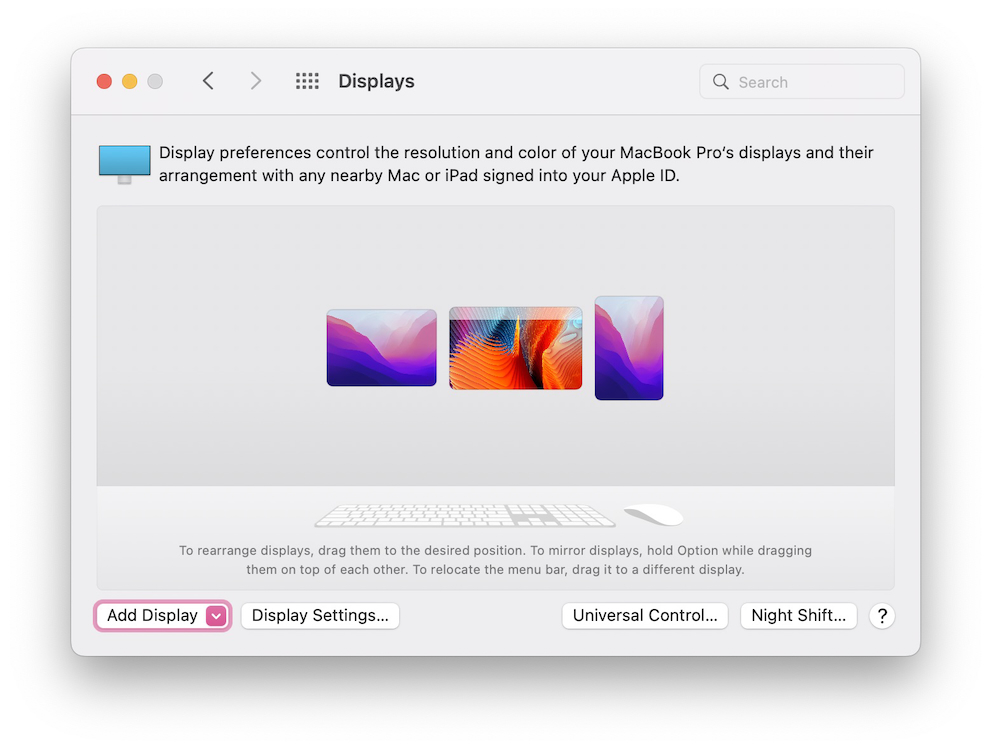
Airplay on the Mac: iPad Pro (right and iPad mini)
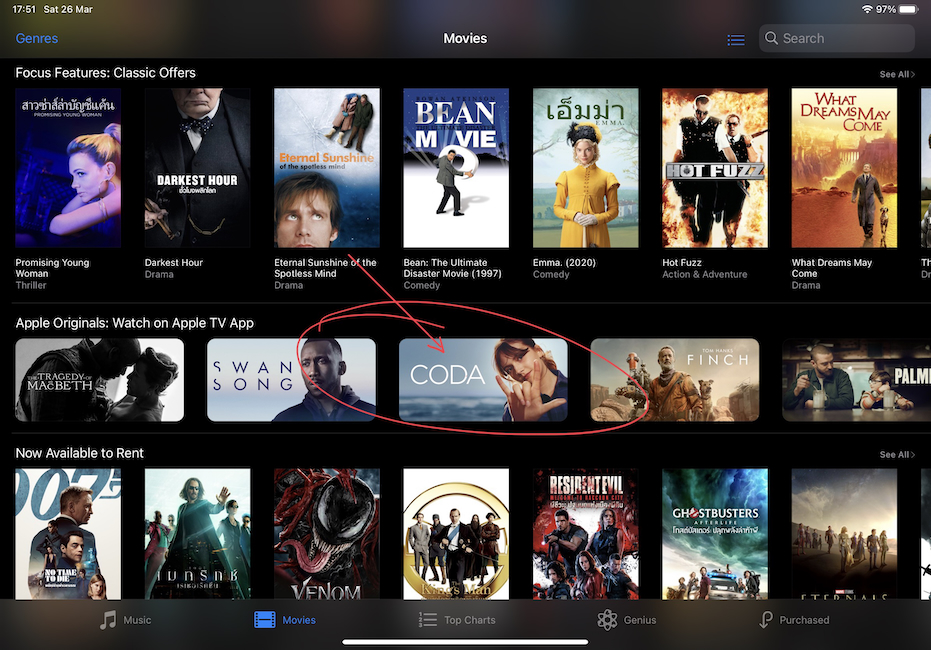
CODA in the listings here but not available
Covered in The Guardian, Boing Boing (Rob Beschizza) and other sources, we are told that Meta paid a Republican company for an attack campaign in the press with letters and articles about the alleged threat from the app to young people. The stories were faked. One of the letters included a trend on TikTok that originated on Facebook. Beschizza writes, "Most of those viral local stories about teens smashing up bathrooms, slapping teachers and so on? They were either happening on Facebook itself or completely bogus." In the Guardian article by Gloria Oladipo that outlines some of the details, she writes that Meta representative, Andy Stone, defended the campaign: "We believe all platforms, including TikTok, should face a level of scrutiny consistent with their growing success." The rank smell of hypocrisy.
Graham K. Rogers teaches at the Faculty of Engineering, Mahidol University in Thailand. He wrote in the Bangkok Post, Database supplement on IT subjects. For the last seven years of Database he wrote a column on Apple and Macs. After 3 years writing a column in the Life supplement, he is now no longer associated with the Bangkok Post. He can be followed on Twitter (@extensions_th) |
|


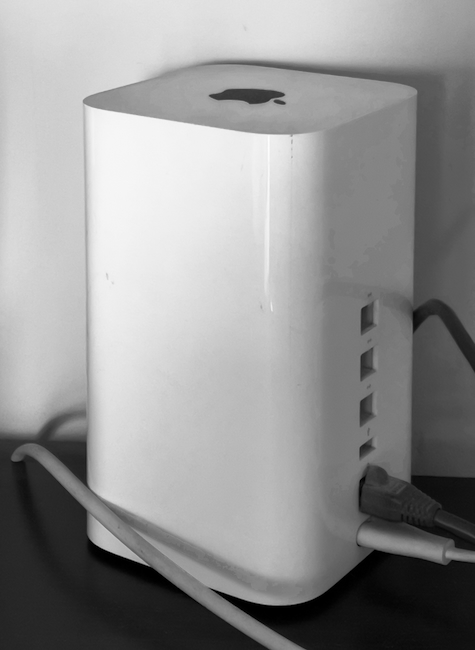 The morning after reading all the horror stories and deciding against the Airport-like D-Link router, I connected the Airport Extreme to a power source and saw that it was still working. The Ethernet cable was next and the flashing orange light changed green immediately. I looked at the devices and saw that each recognised the network, although they were still connected to the WiFi 6 router.
The morning after reading all the horror stories and deciding against the Airport-like D-Link router, I connected the Airport Extreme to a power source and saw that it was still working. The Ethernet cable was next and the flashing orange light changed green immediately. I looked at the devices and saw that each recognised the network, although they were still connected to the WiFi 6 router.
